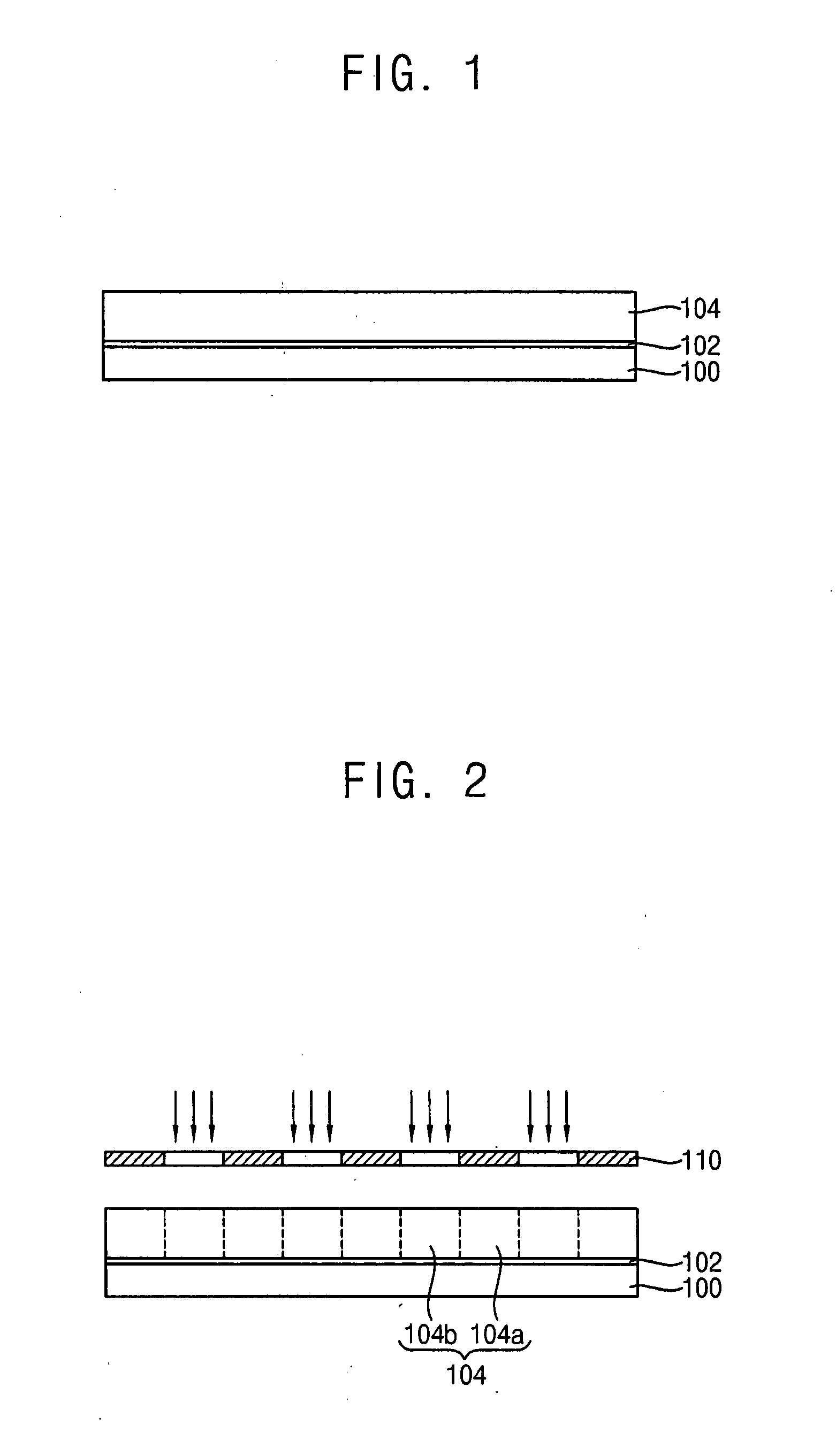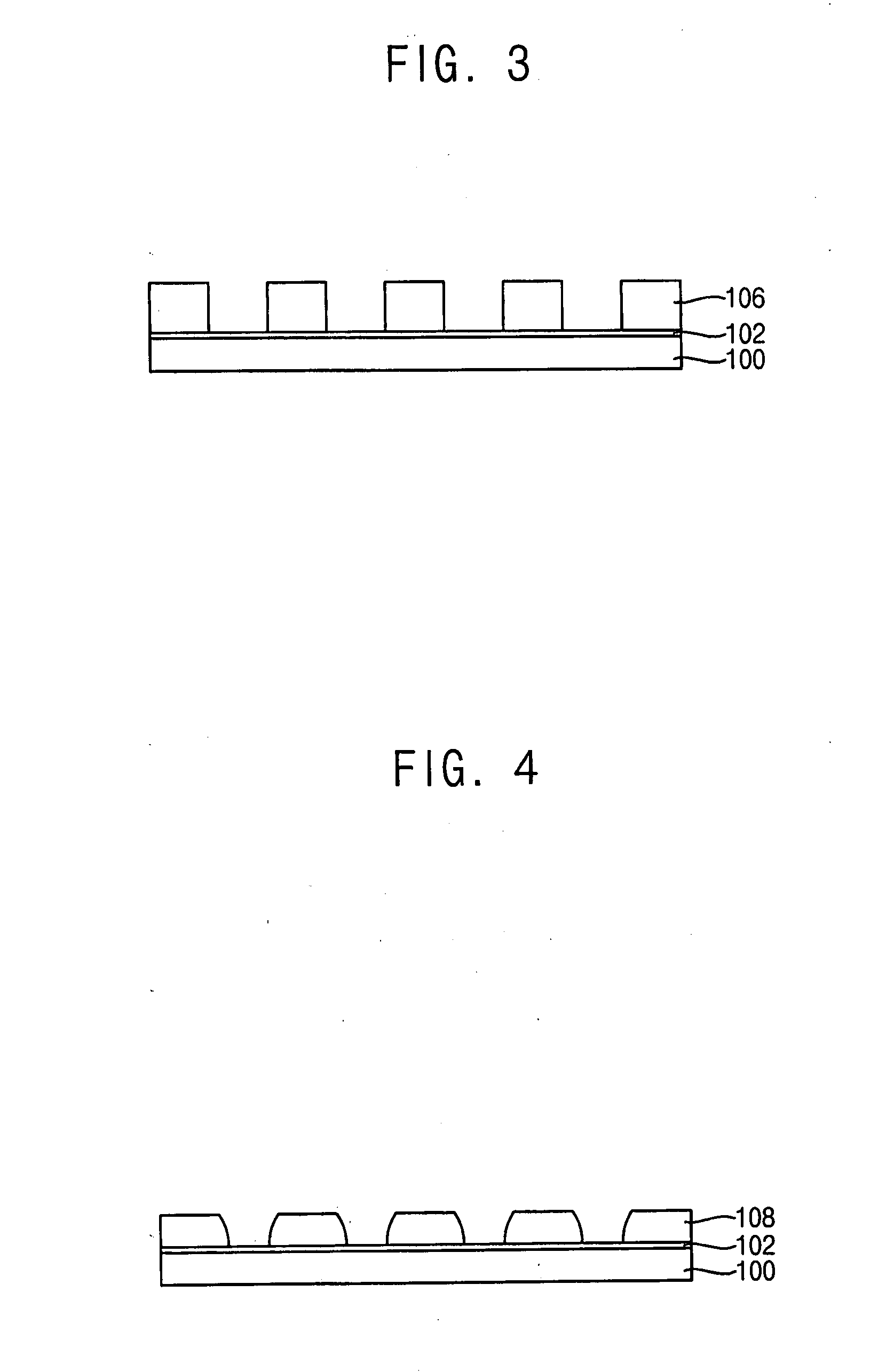Photoresist compositions and methods of forming a pattern using the same
a composition and composition technology, applied in the field of photoresist compositions and methods of forming patterns, can solve the problems of reducing the production yield of a semiconductor manufacturing process, poor uniformity of the pattern, and non-uniform critical dimension of the photoresist pattern formed by the flow baking process at high temperature, so as to reduce or suppress the hydrogen bonding of the acrylate copolymer chain, improve the uniformity of a critical dimension and enhance the profile of the photoresist pattern
- Summary
- Abstract
- Description
- Claims
- Application Information
AI Technical Summary
Benefits of technology
Problems solved by technology
Method used
Image
Examples
example 1
[0091]A photoresist composition was prepared by mixing about 111 parts by weight of a first methacrylate copolymer, about 2 parts by weight of triphenylsulfonium triflate, and about 887 parts by weight of propylene glycol monomethyl ether acetate, and by filtering the mixture using a membrane filter of about 0.2 μm. The first methacrylate copolymer included about 35 percent by mole of a first repeating unit represented by Formula (5), about 35 percent by mole of a second repeating unit represented by Formula (6), about 1 percent by mole of a third repeating unit represented by Formula (7) and about 29 percent by mole of a fourth repeating unit represented by Formula (8), and had a glass transition temperature (Tg) substantially lower than about 150° C.
example 2
[0092]A photoresist composition was prepared by performing processes substantially the same as those of Example 1 except that a second methacrylate copolymer was used instead of the first methacrylate copolymer. The second methacrylate copolymer included about 35 percent by mole of the first repeating unit, about 35 percent by mole of the second repeating unit, about 10 percent by mole of the third repeating unit and about 20 percent by mole of the fourth repeating unit, and had a glass transition temperature (Tg) substantially lower than about 150° C.
example 3
[0093]A photoresist composition was prepared by performing processes substantially the same as those of Example 1 except that a third methacrylate copolymer was used instead of the first methacrylate copolymer. The third methacrylate copolymer included about 35 percent by mole of the first repeating unit, about 35 percent by mole of the second repeating unit, about 20 percent by mole of the third repeating unit and about 10 percent by mole of the fourth repeating unit, and had a glass transition temperature (Tg) substantially lower than about 150° C.
PUM
| Property | Measurement | Unit |
|---|---|---|
| glass transition temperature | aaaaa | aaaaa |
| temperature | aaaaa | aaaaa |
| width | aaaaa | aaaaa |
Abstract
Description
Claims
Application Information
 Login to View More
Login to View More - R&D
- Intellectual Property
- Life Sciences
- Materials
- Tech Scout
- Unparalleled Data Quality
- Higher Quality Content
- 60% Fewer Hallucinations
Browse by: Latest US Patents, China's latest patents, Technical Efficacy Thesaurus, Application Domain, Technology Topic, Popular Technical Reports.
© 2025 PatSnap. All rights reserved.Legal|Privacy policy|Modern Slavery Act Transparency Statement|Sitemap|About US| Contact US: help@patsnap.com



